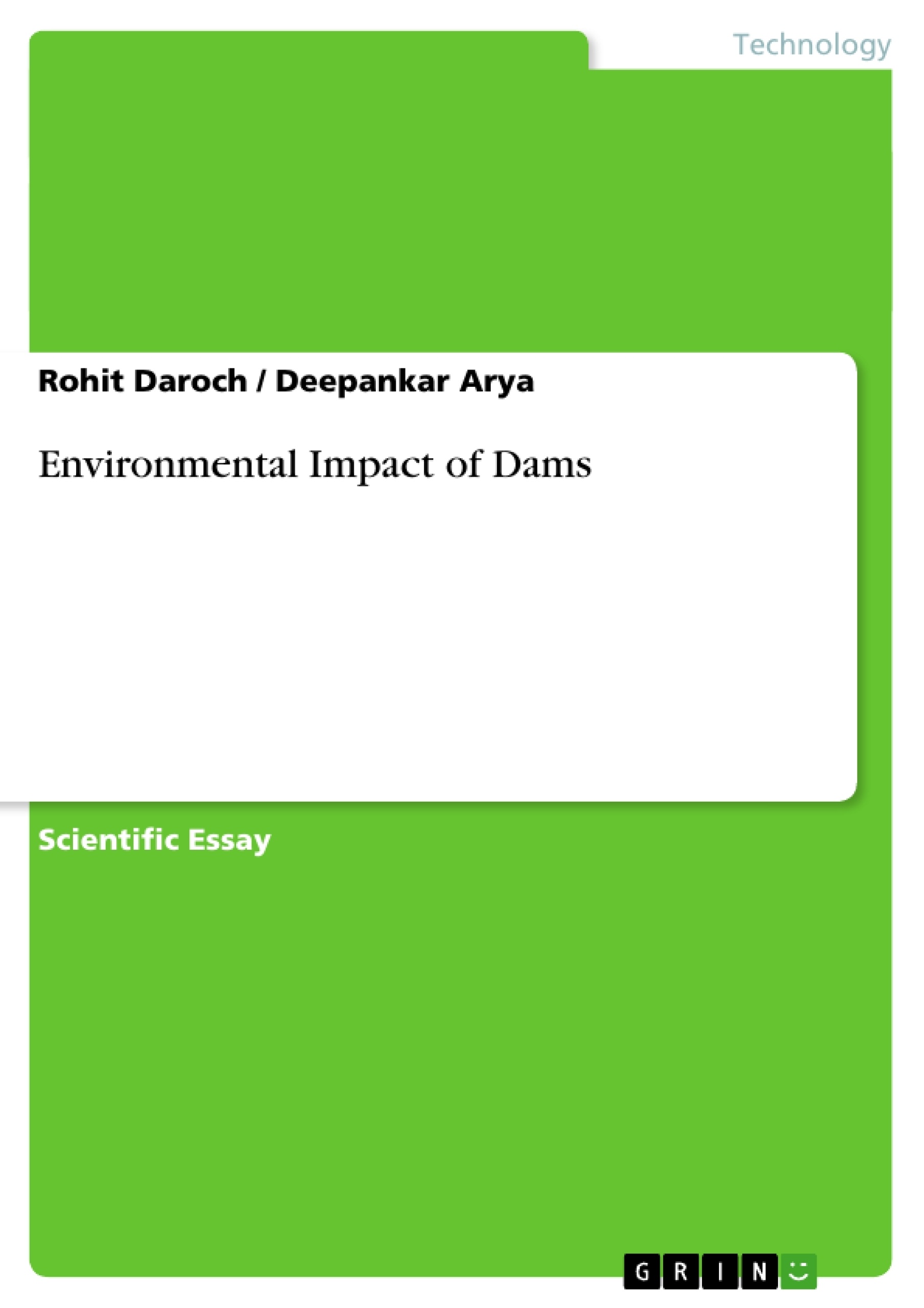According to WWF: • Worldwide the total amount of water stored in dams is 3-6 times more than that contained in rivers. • The wetlands area during the 20th century has decreased by over 50%. • Out of the 10,000 recorded freshwater species more than 20% have either become extinct, threatened or endangered in recent times.
These facts are enough to justify the tremendous impact on environment dams are having. Large scale projects like dams are often floated as important and necessary means of economic development. But this development comes at some or the other cost. Cost to the environment, development and society. So what are dams really for? • Water supply for the general public for domestic uses as well as irrigation which is imperative for our agrarian Indian society. • Hydroelectric power generation. India is the 7th largest producer of hydroelectric power with 114 Tetra-watt hours. It produces 3.3% of the world total. • Dams impede the turbulent and sudden flow of water to prevent floods.
Well that is what they are for and granted many of them achieve the above given purposes but they are subject to widespread criticism and debate. Several vehement national and international movements have brought into light the severe problems associated with them. Dams have been criticized for disturbing natural water flows, affecting deposits of nutrients as well as lifecycles of species that depend on freshwater habitat. Reductions in water quantities can increase salinity and make the water unusable for drinking and irrigation. The transport of sediments that are crucial for natural cycles is also affected. This may cause flood risks, lower groundwater tables and in turn affect entire ecosystems. With that said we must point out that dams do not always have a negative impact on habitats. E.g. once reservoirs become established they can become sites where birds can thrive. There are cases where dam projects have taken up significant compensation for the environmental damage they had caused during their initial phases, but these cases are few and far between. In this report, we take up the issue of impact of dams from three different perspectives which we believe are best suited for such a topic: - Economics, Population and Risks and Hazards. We first present them individually and give a brief analysis of each perspective then we present a comprehensive and thorough conclusion at the end.
Table of Contents
- INTRODUCTION
- DAMS AND ECONOMY
- Economic Benefits
- Economic Dis-Advantages
- Positive Externalities
- Negative Externalities
- IMPACTS OF DAMS ON HUMAN POPULATION
- Reasons
- Diseases
- Incomplete Displacement
- Resettlement
- Disaster
- Submergence of Cultural Heritage Site
- RISK AND HAZARD PERSPECTIVE
- Dam Failure
- Historically Significant Dam Failures
- Rivers at risk
- Social Problems Created
- Risk Perception from Dams
- The Three Gorges Dam
- Sardar Sarovar Dam
Objectives and Key Themes
This report aims to analyze the environmental impact of dams from three different perspectives: economics, human population, and risks and hazards. The report seeks to evaluate the economic benefits and drawbacks of dam construction, explore the social and cultural implications of dam-induced displacement, and highlight the potential risks and hazards associated with dam failure and operation.
- Economic impact of dam construction and maintenance
- Social and cultural consequences of displacement due to dam construction
- Environmental risks and hazards associated with dam failure and operation
- The need for responsible dam development and management practices
- The importance of considering alternative water management strategies
Chapter Summaries
The first chapter explores the economic perspective of dam construction and maintenance. It examines the economic benefits, including hydroelectric power generation and flood control, as well as the economic drawbacks, such as high initial construction costs and potential negative externalities. The second chapter focuses on the impacts of dams on human populations. It discusses the displacement of communities, the disruption of livelihoods, and the cultural and social consequences of resettlement. The third chapter examines the risks and hazards associated with dam construction, operation, and maintenance. It highlights the potential for dam failures, the environmental impacts of water withdrawal, and the social problems caused by dam construction.
Keywords
This report focuses on the environmental impact of dams, examining the economic, social, and environmental considerations related to dam construction, operation, and management. Key themes include hydroelectric power generation, displacement and resettlement, dam failure, water resource management, and sustainable development. The report also explores the role of government policies, public participation, and international cooperation in mitigating the negative impacts of dams.
- Quote paper
- Rohit Daroch (Author), Deepankar Arya (Author), 2013, Environmental Impact of Dams, Munich, GRIN Verlag, https://www.grin.com/document/275580




